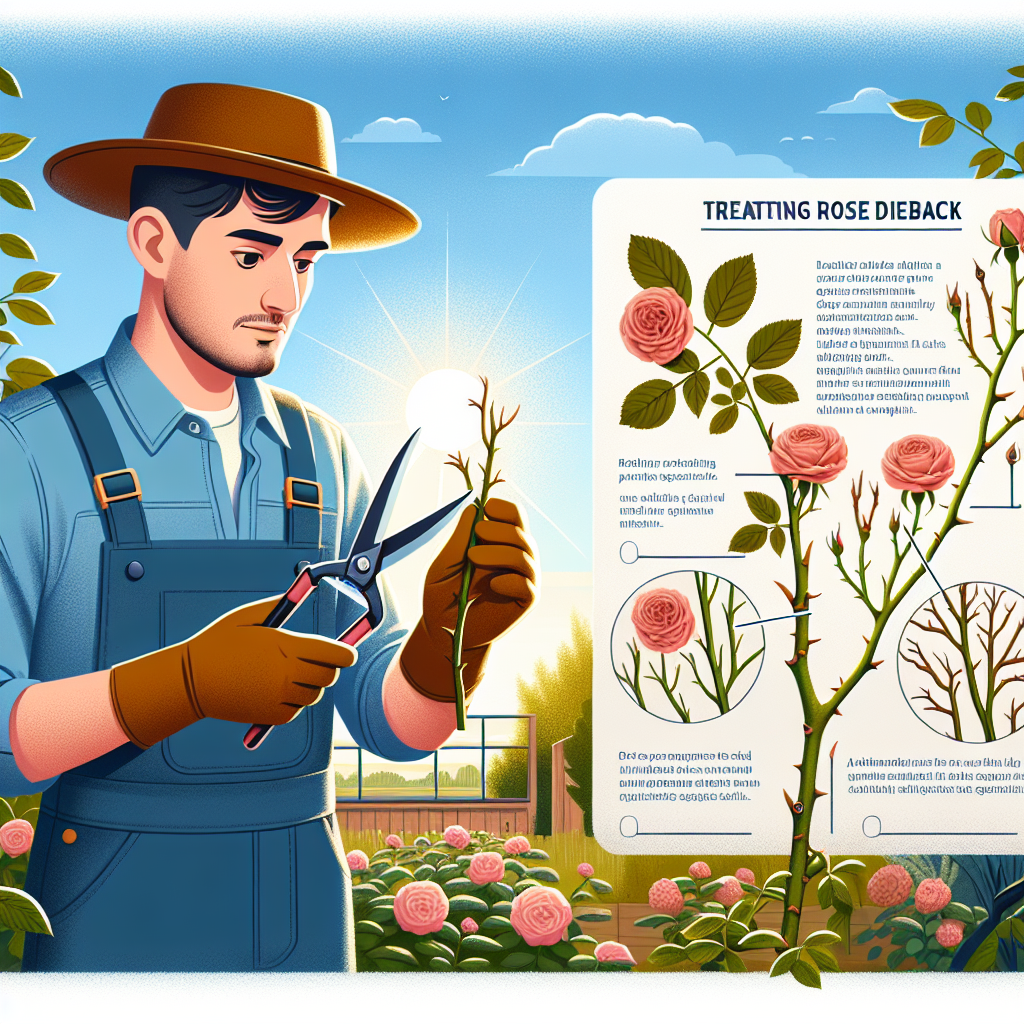
How to treat rose dieback
Understanding Rose Dieback: A Common Garden Challenge
Roses are often heralded as the queens of the garden, celebrated for their stunning beauty, delightful fragrance, and the variety of colors they bring to our outdoor spaces. Yet, like all plants, they are not immune to specific diseases and problems. One of the most frustrating challenges rose gardeners can face is dieback. This condition can affect the overall health of your plants and could even threaten their survival if left untreated. In this article, we will explore how to treat rose dieback effectively, ensuring your roses remain healthy and vibrant.
What is Rose Dieback?
Rose dieback is a term used to describe a condition where a rose plant begins to lose foliage and vitality, ultimately leading to the decline of stems and branches. This phenomenon can be the result of several factors, including environmental stress, pests, diseases, and inadequate care. Understanding the symptoms and causes of rose dieback is crucial for effective treatment.
Symptoms of Rose Dieback
Identifying the symptoms of rose dieback early on can make a significant difference in managing and treating the condition. Some common signs include:
- Wilting or yellowing leaves
- Dead or dried stems
- Stunted growth
- Falling leaves, especially in the lower part of the plant
- Blackened or brown tips on leaves
- Soft or mushy stems, indicating rot
If you notice any of these symptoms, it's crucial to take action promptly to avoid further complications.
Causes of Rose Dieback
Rose dieback can be attributed to various factors, each requiring a unique treatment approach. Identifying the underlying cause is essential for effective management. Common causes of rose dieback include:
- Environmental Stress: Extreme temperatures, poor soil quality, and inadequate light exposure can weaken your rose plants.
- Watering Issues: Both overwatering and underwatering can cause stress to the roots, leading to dieback.
- Pests: Insects such as aphids, spider mites, and thrips can harm roses, causing leaves to yellow and drop.
- Fungal Diseases: Conditions like powdery mildew and root rot are common pathogens that can cause significant damage to roses.
- Bacterial Infections: Bacterial wilt and crown gall can also lead to dieback symptoms.
Steps to Treat Rose Dieback
Now that we understand the symptoms and causes of rose dieback, we can outline the steps on how to treat rose dieback. Depending on the identified cause, your approach may differ. Below are general guidelines that can help keep your roses healthy.
1. Assess and Prune Affected Areas
The first step in treating rose dieback is to assess the overall health of your plants. Look for affected stems and branches that are no longer viable. Use clean and sharp pruning shears to cut away any dead or diseased areas, making sure to prune back to healthy tissue. Follow these steps:
- Inspect the plant thoroughly.
- Remove any dead, damaged, or diseased stems.
- Ensure cuts are clean and at a 45-degree angle to encourage quick healing.
- Dispose of the cuttings away from the garden to prevent the spread of disease.
2. Adjust Watering Practices
Watering is crucial for rose maintenance, but both overwatering and underwatering can lead to dieback. Monitor your watering routine by considering the following:
- Water deeply and less frequently, allowing the soil to dry out partially between waterings.
- Use mulch to help retain moisture and regulate soil temperature.
- Avoid watering in the evening to reduce fungal diseases that thrive in damp conditions.
3. Fertilize Wisely
If environmental stress is leading to dieback, consider improving your soil with appropriate fertilization:
- Utilize a slow-release, balanced fertilizer formulated for roses.
- Avoid over-fertilizing, which can burn the roots.
- Consider organic options such as compost or well-rotted manure to enrich the soil.
4. Manage Pests and Diseases
Keeping pests and diseases at bay is vital for maintaining your roses' health. Start with integrated pest management techniques:
- Regularly check for signs of pests and remove them manually or with insecticidal soap.
- Encourage beneficial insects like ladybugs that naturally control pest populations.
- Implement crop rotation and companion planting to deter diseases.
- Consider fungicide treatments if you notice symptoms of fungal infection.
5. Create Optimal Growing Conditions
Creating an optimal environment for your roses reduces the likelihood of stress and disease:
- Choose the right location with full sun exposure for most of the day.
- Ensure proper air circulation to prevent humidity buildup.
- Use well-draining, rich soil to support healthy root development.
6. Regular Maintenance
Prevention is always better than treatment. Regularly maintain your rose plants to minimize future dieback incidents:
- Deadhead flowers throughout the blooming season to encourage new growth.
- Monitor your garden regularly for any unusual changes or indications of stress.
- Practice appropriate seasonal pruning techniques to promote healthy growth.
- Keep an eye on weather forecasts to respond promptly to extreme weather events.
Conclusion
Roses can face a multitude of challenges in their journey from seedlings to blossoming plants. Understanding how to recognize the signs and symptoms of rose dieback and implementing effective management strategies can help restore your plants to health. Remember, the goal is to create an environment where your roses can thrive. Implementing good gardening practices, understanding the needs of your plants, and staying vigilant will ensure that your roses continue to bring joy and beauty to your garden for many seasons to come.
"With attention and care, even the most troubled rose can flourish anew." - Gardening Enthusiast
By adopting these recommendations and strategies, you will master the craft of caring for roses and in turn, you will not only avoid dieback but also enhance the beauty of your garden.
By Guest, Published on September 29th, 2024